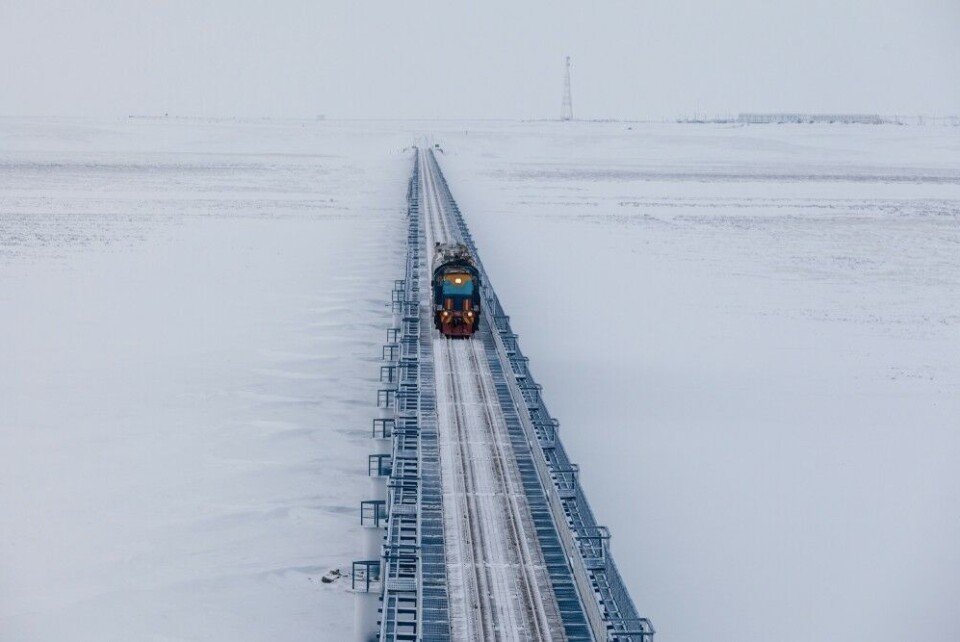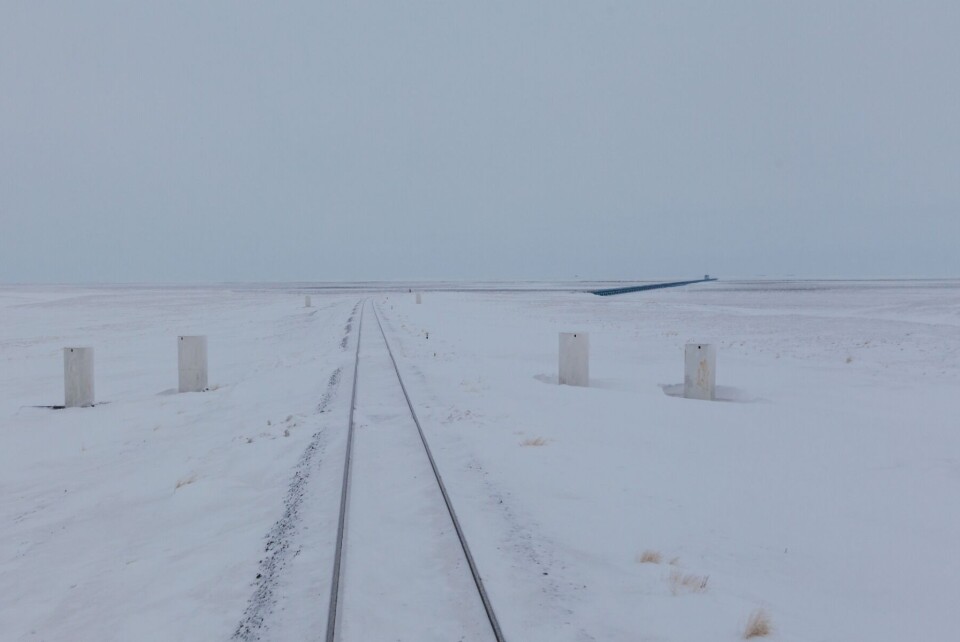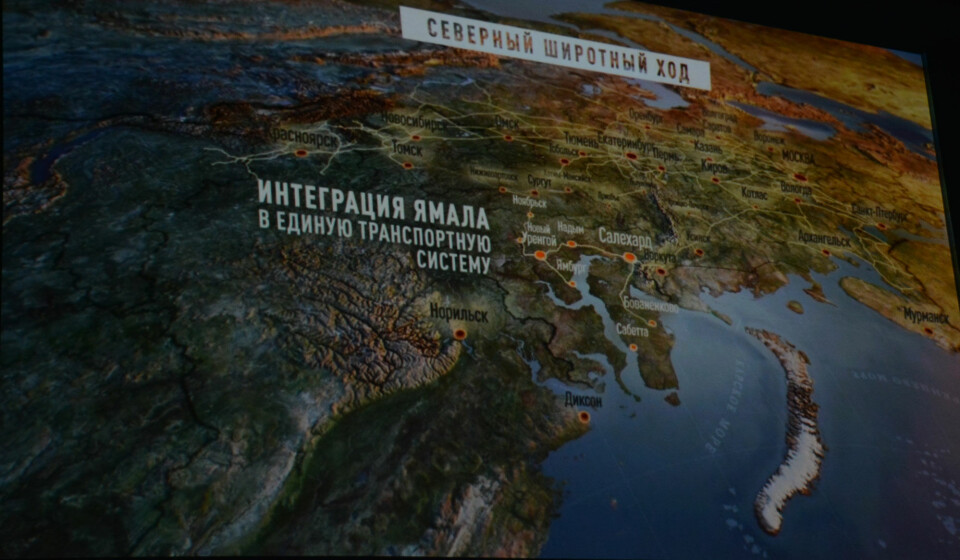
How to scientifically squeeze oil out of ice
Russian railway workers develop permafrost.
In 2021, the chairmanship of the Arctic Council will be transferred from Iceland to Russia. It is logical that the Russian University of Transport (RUT) was chosen as the venue for the 5th International Arctic Summit in Moscow. Its scientists have been designing railways in the Arctic for years, satisfying both the strategic interests of the country and the needs of business. On the last day of the summit, we talked about the university’s participation in Arctic projects with Taisiya Shepitko, director of RUT’s Institute of Roads, Construction and Structures.
- What are researchers doing in the Arctic zone today?
- Our main work is in supporting scientific projects. We are involved in all stages of design, operation, construction and reconstruction of transport facilities. We have been working closely with the Yamal-Nenets Autonomous Okrug since 1986 when the construction of the Obskaya - Bovanenkovo - Karskaya line began there. Since then, we have been going on expeditions almost every year where students get practical training and work with construction teams.
- What railway line is this for?
- Gazprom ordered a railway to export minerals from the Bovanenkovskoye field on the Yamalsky District peninsula. The line runs 572 km and Russian Railways classifies it as an access road. It is the only line in the world built completely on permafrost soil beyond the Arctic Circle. Bovanenkovo is closed to travelers so we normally only transport minerals and watchmen. The line was launched in 2010 and since then our task has been to find solutions to keep everything going.

- Do you often have to revise decisions?
- Sometimes there are problems even during construction. There are only two ways to build a railway in the North. We have to preserve the permafrost and we must prepare for degradation, mostly from thawing. Initially, it was believed that it would be correct to build embankments from completely thawed earth. But after just 10 meters, it became clear that this was not the best idea.
Our scientists came up with an innovative “puff-pastry” type sub-grade design. We remove the soft soil and lay geotextile containers, no more than 60 cm high, on the roadbed. The Geotextiles are spread out along the site and soil or frozen sand, for example, is poured directly onto the tundra and onto the containers. The material has a moisture content of up to 25%, which is a lot, and if you just sprinkle it on a frozen base and wait for spring, it will simply spread over the tundra like a pulp. The dumped soil becomes compacted and wraps itself in the geotextile containers. We sandwich these with a heat insulator and then rocky soil is poured on top and the slopes are strengthened with this material or with peat. This allows the base of the embankments to be kept frozen and to ensure the stability of the railroad track.
- What about water transport via the Northern Sea Route?
- The Northern Sea Route is an Arctic transport artery but the ports freeze in winter and this is a drawback. The Russian icebreaker fleet is, of course, the largest in the world but scientists sometimes express unexpected ideas about using it. For example, we have suggested replacing the Northern Sea Route with bottom tunnels. But there is still a long way to go before we can try any practical applications of any such innovation.
If we want year-round transport, it is necessary to build new railways and primarily to extend the Northern Latitudinal Railway, which runs almost parallel to the Northern Sea Route. At the same time, we would have to lay meridional roads and create river routes. There are many rivers in the Arctic zone. With this plan, it would be possible to create a high-latitude national transport infrastructure to back up not only transport by sea, but air transportation as well. We also deal with the problem of difficult runways including unpaved landing strips. Without our support, planes run the risk of landing in a thawed swamps. The railway remains currently the only all-season mode of transport.
- Is RUT also participating in the Northern Latitudinal Railway?
- Yes. We have been involved since 2019. Our scientists have been taking part in transpolar expeditions with the Russian Geographical Society. They are exploring the possibility of laying new transport communications. The Northern latitudinal passage is a Stalinist era road that was built by prisoners. The construction was stopped in 1953 for a well-known reasons. According to the original plan, it was supposed to cover 1,500 km and continue to the Igarka station in the east of the Arctic zone. The new design follows the same Salekhard - Nadym - Pangody - Korotchaevo route but covers only 707 km.
The purpose of the expeditions is to find the optimal direction for the development of the Northern Latitudinal Passage. One variant passes along the many fields in Russkoye, Uzunskoye, Vankorskoye, etc. A second variant follows the Stalinist plan and travels east to Igarka and then turns sharply to the north to Norilsk and Dudinka. A third possibility is something in between. The Yamal Railway Company already has an operating line there. The most cost-effective solution must be found and our primary task is to connect the two northern latitudinal railways, the Northern and Sverdlovsk, and further develop them to the north and east. This is a completely commercial project and the construction will allow for the transportation of goods from east to west and back again.

- Many countries are interested in Arctic development. Who is using the most advanced techniques?
- Circumpolar countries are actively developing the Arctic. Norway is building very light embankments on weak substrates using expanded polystyrene. It’s an interesting experience.
In Russia, Rosavtodor has developed a light embankment design for weak foundations using light geocomposite materials. Several countries are also using renewable energy sources such as solar to power railways. This is especially for non-electrified lines in remote areas. My Moscow colleagues and I from Bauman State Technical University are also working within the framework of our RFBR grant on this interesting problem. We have even received a patent. So far however, it has not been possible to test our “solar powered railway”.
China is also building roads in permafrost regions like the Qinghai - Tibet railway line. Its highest point is 5700m and towards Lhasa, it gradually decreases to 2400m. But they also have their problems. The Chinese road runs on rocky ground while our Obskaya - Bovanenkovo - Karskaya road is built on a frozen swamp. These are different conditions and require different innovations. But in many projects, our solutions are pioneering the way. Two of these are the Trans-Siberian Railway Network and Baikal–Amur Mainline.
- What contribution does the federal budget make to the modernization of the Arctic infrastructure? In what regions and businesses are they interested?
- Public-private partnerships are being implemented, like for example the bridge across the Ob River. This is a stumbling block for connecting the Northern and Sverdlovsk railways. There is a large share of state participation but both the regional government of the Yamalo-Nenets Autonomous Okrug and private business are invested because this bridge is needed to export minerals.
- Is the Arctic policy linked to national security?
- Certainly. The Russian Geographical Society is actively working there and works with RUT (MIIT) to solve national security problems.
- Is the development of the Arctic necessary? And is this all to strengthen the geopolitical status of Russia or to develop its economy?
- I would say the answer is fifty-fifty. As soon as a reliable transport connection appears, the labor market will develop.
- In May, UNESCO adopted the Berlin Education Declaration for Sustainable Development. Is there a large ecological component in today’s educational process?
- RTH has been focused on sustainable development for more than a century. Since 1896, RUT, and at the time, Nikolai II’s Moscow Engineering School of Railways, have been training bridge builders and railway builders for the Trans-Siberian Railway. This project is still relevant. In foreign universities, they generally do not specifically train bridge building, locomotive or carriage specialists. True, China also builds unique bridges and overpasses for their high-speed railways.
But man-made structures have an impact on nature and problems during transport communications construction are inevitable. Sailors say that the most environmentally friendly mode of transport is by water and there is truth to that. But we believe that the railway is also quite environmentally friendly. It is difficult to fight global warming but you need to keep up with nature. If we interfere with natural systems, we must be able to plan and correctly apply preventive actions in order to prevent such disasters as the fuel spill in Norilsk. Therefore, starting next year, we plan to open a “design, construction and transport communications in the Arctic operation zone” specialization. We are planning this with an emphasis on ecology. Graduates with this specialty should be able to design, build, operate and perform geotechnical monitoring and predict the state of both natural and technical systems.















